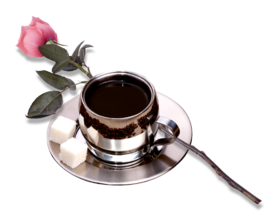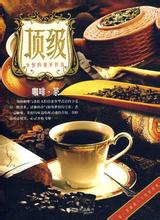Flavor and taste characteristics of Colombian coffee beans in Colombian coffee producing area
Washington was planned by U.S. Army Major Pierre Charles Ladyman 39, who also designed New York's Federal Hall. The planning at that time
Washington, D.C. Emblem
Washington, D.C. Emblem
It is based on horse-drawn carriages as a basic means of transportation, so Washington's road system is not suitable for modern motor transportation systems. At present, Washington is regarded as the city with the worst road traffic conditions in the United States. From 1791 to 1792, Andrew Ellicott and Benjamin Banneker, an African-American free man, surveyed the boundaries of the District of Columbia, burying a boundary marker per mile. Many of these boundary markers still exist. The foundation of the White House was laid on October 13, 1792. On August 24, 1814, British forces captured the District of Columbia and burned down most public buildings during the War of 1812. The American army failed to organize effective defenses and fled after burning down the naval shipyard. British troops burned down US government buildings such as the US Parliament, the White House and the Treasury. It is generally believed that the British burned Washington in retaliation for the American invasion and burning of Toronto (known as York at the time). But British action was limited to public buildings, while American troops destroyed many houses when they burned down Toronto, causing many Canadians to sleep on the streets in winter. In 1847, land on the south bank of the Potomac River was returned to Virginia. Before the outbreak of the American Civil War, Washington was a small town with only a few thousand people living. After the outbreak of the American Civil War, due to the needs of the war, the US government expanded rapidly and the population of Washington increased significantly.
The world coffee is divided into two series, one is the "hard" coffee represented by Brazil, which has a strong flavor, and the other is the "soft" coffee represented by Colombia, which has a light flavor. The difference lies in the altitude of the producing area and the method of planting. Coffee is planted extensively in hilly red soil in Brazil and intensive cultivation in mountain black soil in Colombia. The Colombian super aroma is rich and thick, with clear high-quality acidity, high balance, and sometimes nutty, lingering aftertaste. Both in appearance and quality, Columbia Super Class is quite excellent, just like a woman's vaguely charming, charming and just right, reminiscent of Colombian coffee has a kind of bitter experience, as astringent as life. Looking back on the hardship in the past, I will feel its sweetness and warmth even more, and I want to let the mood stop in the consciousness that begins to awaken for a long time. Bitter is painful, clear and quiet, and the final fragrance becomes a spiritual triumph. Each caffeine variety has its own strong character, such as the masculine Mantenin, which resembles the character of an iron and steel man; mellow, fragrant blue mountain coffee, the most gentle woman yearning addiction. Columbia Super Coffee, which has always been light-scented, is the most suitable for those who like light sex. Such people do not want to drink coffee as a sitting thing, from sour, sweet, bitter, astringent experience what profound philosophy of life, just want to simply drink a cup of delicious coffee, a cup of hot Colombian coffee, let these people realize that "the best state of life is rich and quiet." Quiet, because of getting rid of the temptation of external fame and gain; rich, because of having the treasure of the inner spiritual world. They believe that the greatest happiness in life is to reap such an incisive interpretation of the realm.
The main varieties of Colombian coffee are small grains of coffee. Plants are small trees or large shrubs, 5-8 m tall, usually much branched at base; old branches gray-white, nodes dilated, young branches glabrous, compressed. Leaves thinly leathery, ovate-lanceolate or lanceolate, 6-14 cm long and 3.5-5 cm wide, apex long acuminate, acuminate part 10-15 mm long, base cuneate or slightly obtuse, rarely rounded, entire or shallowly wavy, both surfaces glabrous, lower vein axils with or without small pores; midrib raised on both surfaces of leaf, 7-13 on each side of lateral veins; petiole 8-15 mm long Stipules broadly triangular, arising from the tip of the upper part of the young branch conical or awn tip, the tip of the old branch is often protruding tip, 3-6 mm long. Cymes are clustered in leaf axils, each with 2-5 flowers, without a total pedicel or with a very short peduncle; the fragrant Colombian climate provides a real "natural pasture" for coffee. Coffee trees in Colombia are mainly cultivated in the Andes, on steep slopes about 1300 meters above sea level, where the annual temperature is about 18 degrees Celsius, annual rainfall is 2000 to 3000 millimeters, latitude 1 °- 11 °15 north, longitude 72 °- 78 °west, the specific range of elevation is more than 2.000 meters. A special combination of factors, latitude, altitude, soil, plant origin of species and varieties of coffee production in Colombia's coffee growing area, rain patterns produced by the climate of the coffee growing area and tropical convergence, changing topography, luminosity, favorable temperature range throughout the year, moderation and Rain Water's distribution And include some common cultural practice areas in the process of selective logging and transformation, including washing and drying. It is very suitable for the growth of coffee, mild climate, humid air, and can be harvested regardless of season, regardless of yield or texture. Colombian coffee is first produced by Medellin, which is characterized by full granulated coffee beans, rich nutrition, moderate acidity, good balance, rich aroma and soft taste. In addition to Medellin, the capitals of two neighboring provinces in the south, Armenia and Manizales, are also famous coffee producers, which formerly belonged to Medellin's province of Andiquio, which had a Caldas football team that played in the last Toyota Cup. These three places have formed the world-famous "coffee zone".

Important Notice :
前街咖啡 FrontStreet Coffee has moved to new addredd:
FrontStreet Coffee Address: 315,Donghua East Road,GuangZhou
Tel:020 38364473
- Prev

Introduction to the characteristics of high-quality coffee beans with flavor and taste in Rwanda coffee producing areas
The provinces prior to 2006 are as follows: Butare, Byumba, Cyangugu, Gikongoro, Gisenyi, Gitarama, Kibungo, Kibuye, Kigali, Kigali Ru
- Next

Introduction to the characteristics of Hawaiian Coffee Flavor and delicious Coffee beans
Real Kona coffee is indeed a treasure in the world and is not easy to find. The best Kona coffee is divided into three grades: ExtraFancy, Fancy and NumberOne. This third-class coffee is produced on manors and under natural conditions. Most of the coffee on the market today that calls itself Kona contains less than 5% of the real Hawaiian Kona. Another kind of no can be found in the United States.
Related
- Detailed explanation of Jadeite planting Land in Panamanian Jadeite Manor introduction to the grading system of Jadeite competitive bidding, Red bid, Green bid and Rose Summer
- Story of Coffee planting in Brenka region of Costa Rica Stonehenge Manor anaerobic heavy honey treatment of flavor mouth
- What's on the barrel of Blue Mountain Coffee beans?
- Can American coffee also pull flowers? How to use hot American style to pull out a good-looking pattern?
- Can you make a cold extract with coffee beans? What is the right proportion for cold-extracted coffee formula?
- Indonesian PWN Gold Mandrine Coffee Origin Features Flavor How to Chong? Mandolin coffee is American.
- A brief introduction to the flavor characteristics of Brazilian yellow bourbon coffee beans
- What is the effect of different water quality on the flavor of cold-extracted coffee? What kind of water is best for brewing coffee?
- Why do you think of Rose Summer whenever you mention Panamanian coffee?
- Introduction to the characteristics of authentic blue mountain coffee bean producing areas? What is the CIB Coffee Authority in Jamaica?

